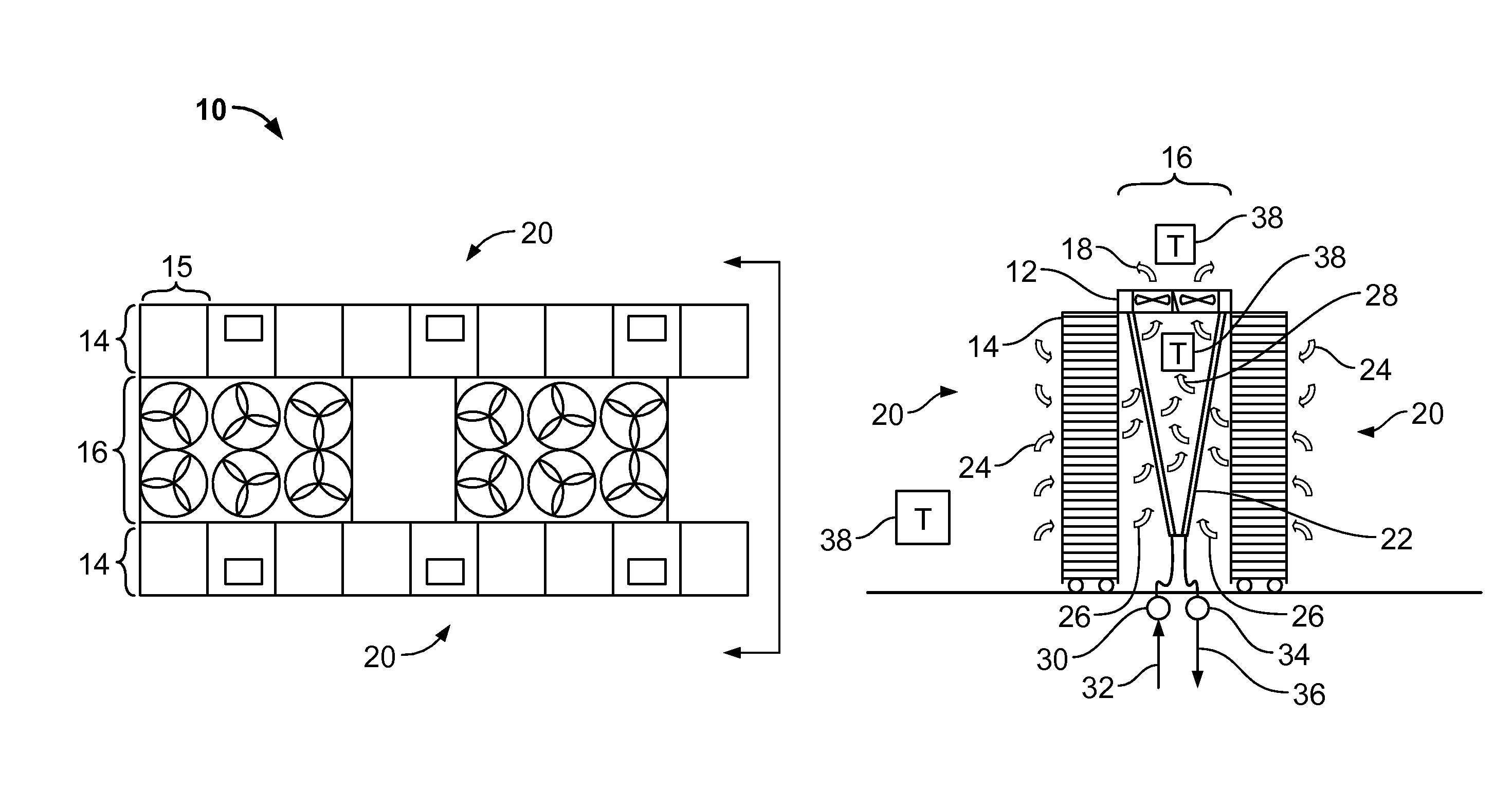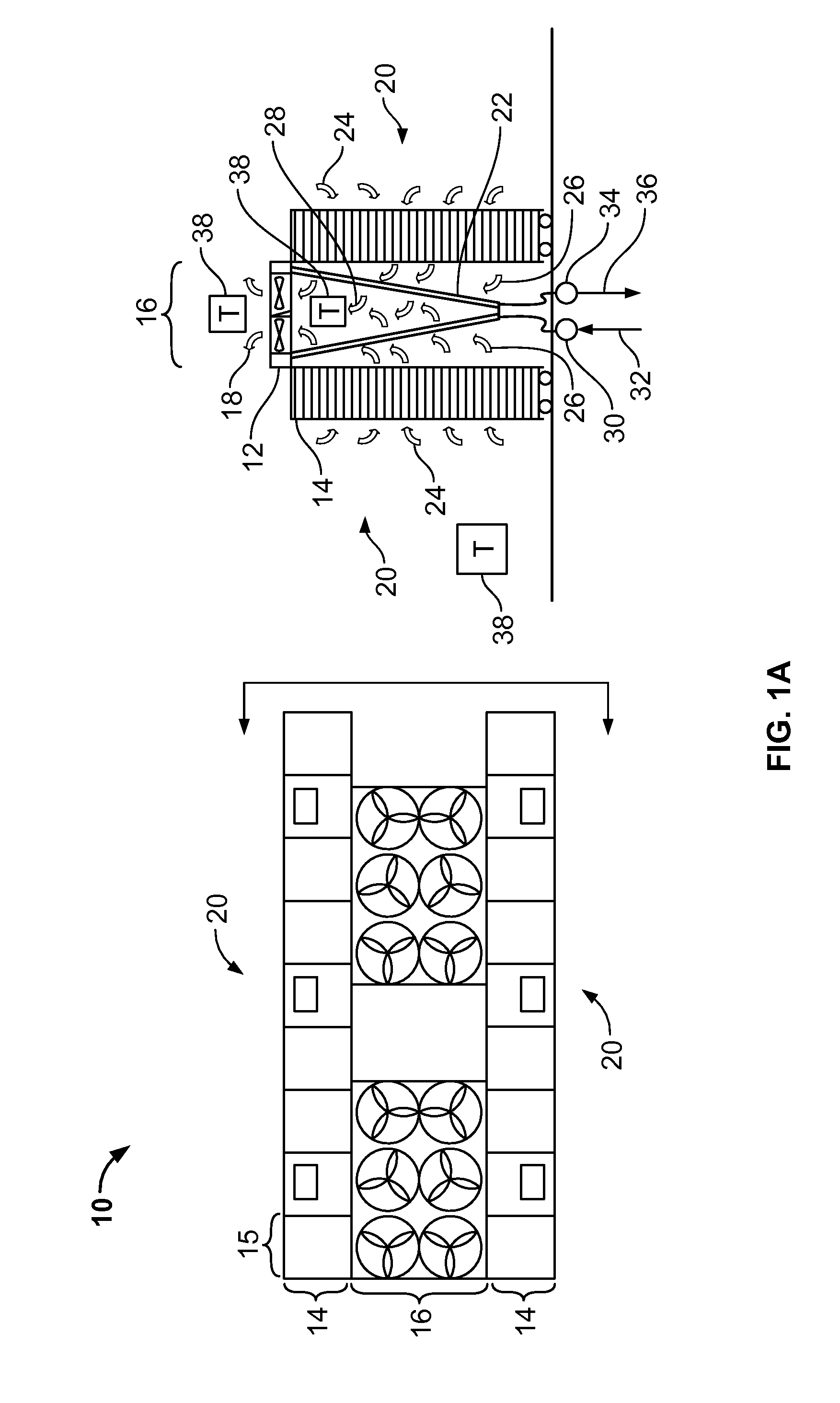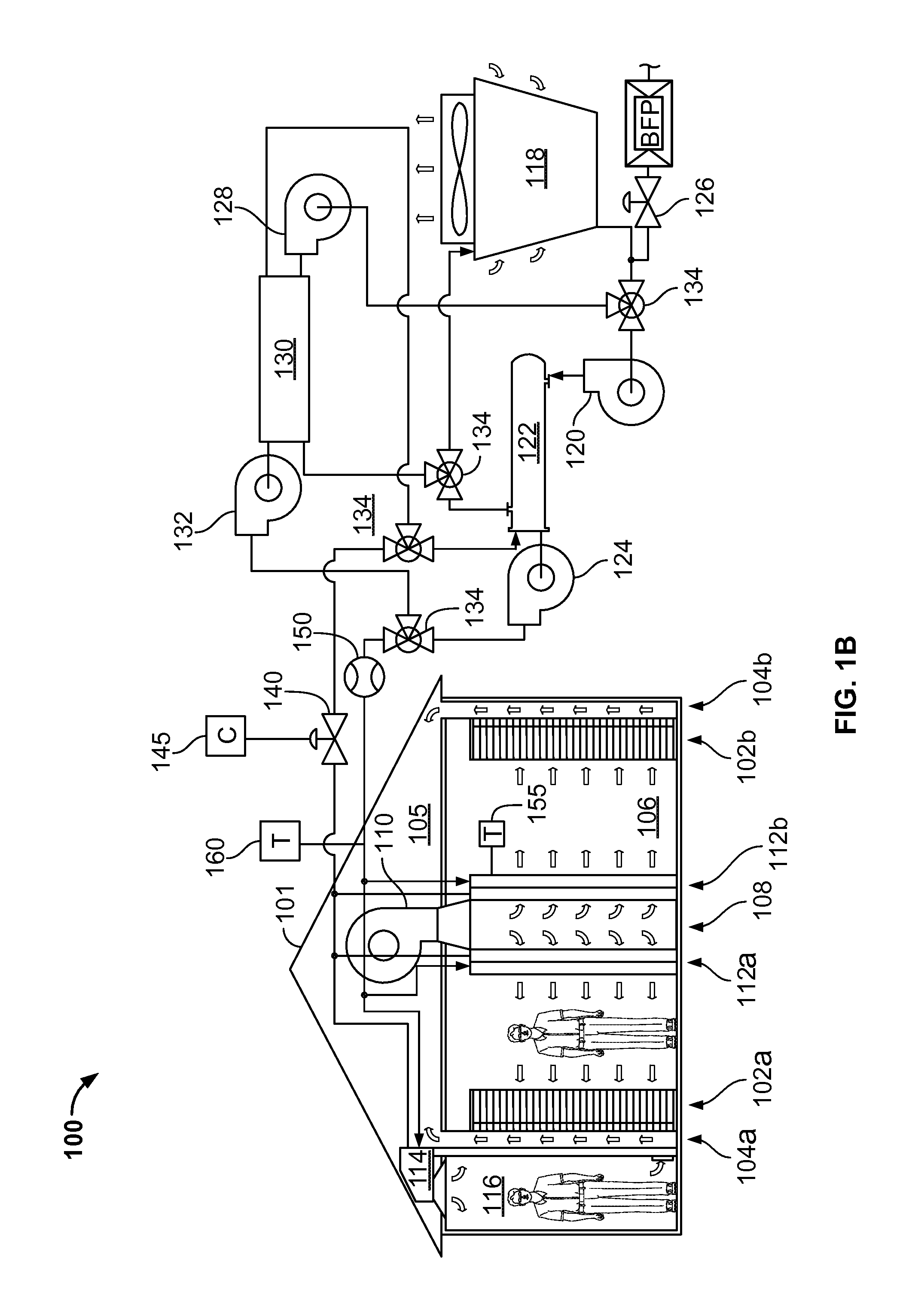Controlling data center cooling
a data center and cooling technology, applied in the field of control of data center cooling, can solve the problems of increasing the cost of cooling, and increasing the cost of removing all of the heat, so as to reduce the amount of energy needed and improve the performan
- Summary
- Abstract
- Description
- Claims
- Application Information
AI Technical Summary
Benefits of technology
Problems solved by technology
Method used
Image
Examples
Embodiment Construction
[0065]This disclosure relates to systems and methods for providing cooling for areas that contain electronic equipment, such as computer server rooms and server racks in computer data centers. For example, in some example embodiments, a cooling apparatus may be controlled to maintain a static or dynamic approach temperature that is defined by a difference between a leaving air temperature of the cooling apparatus and an entering cooling fluid temperature of the cooling apparatus. For example, in some embodiments, a data center cooling system may include multiple cooling units that are arranged to provide cool air to rack-mounted electronic equipment. One or more control valves can be in fluid communication with the cooling units to circulate the cooling fluid to the cooling units. One or more controllers (which may be centrally located or distributed) can in turn be communicably coupled to the control valves to modulate the valves to maintain the approach temperature set point. In s...
PUM
 Login to View More
Login to View More Abstract
Description
Claims
Application Information
 Login to View More
Login to View More - R&D
- Intellectual Property
- Life Sciences
- Materials
- Tech Scout
- Unparalleled Data Quality
- Higher Quality Content
- 60% Fewer Hallucinations
Browse by: Latest US Patents, China's latest patents, Technical Efficacy Thesaurus, Application Domain, Technology Topic, Popular Technical Reports.
© 2025 PatSnap. All rights reserved.Legal|Privacy policy|Modern Slavery Act Transparency Statement|Sitemap|About US| Contact US: help@patsnap.com



